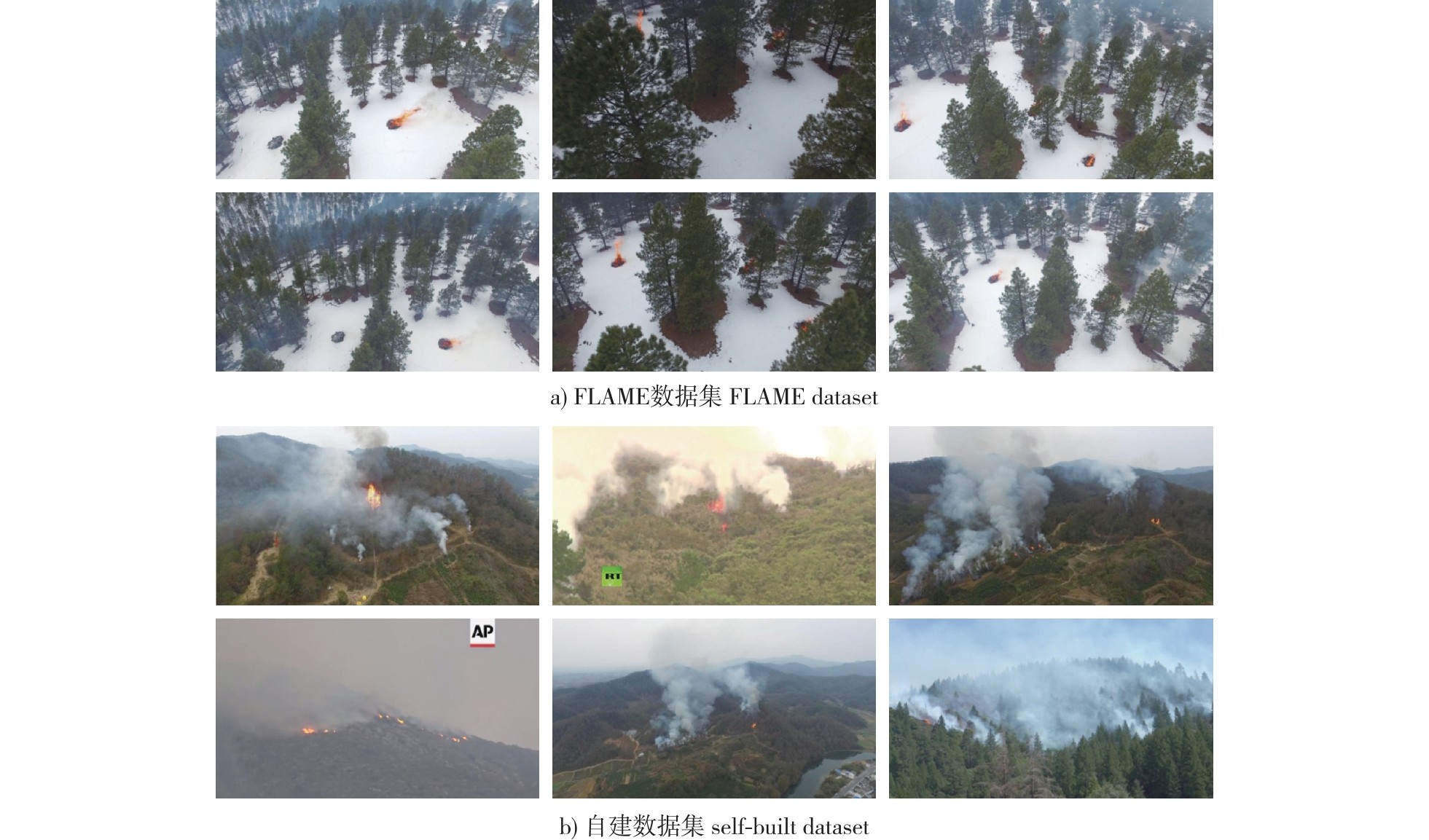 PDF(3324 KB)
PDF(3324 KB)


 PDF(3324 KB)
PDF(3324 KB)
 PDF(3324 KB)
PDF(3324 KB)
基于深度学习的小目标林火检测实验设计与实现
Experimental design and implementation of small target forest fire detection based on deep learning
【目的】基于深度学习及计算机视觉,提出一种小目标森林火灾检测模型SFIRE-DeNet。【方法】该模型采用轻量级主干网络,在特征融合层引入全局注意力机制,有助于减少信息损失并提升深度神经网络的性能。添加小目标检测层用于检测较浅的特征图,从而实现对小目标林火的高精度检测。此外,在不同数据集和多个场景下对模型的检测效果进行测试。【结果】构建的模型在平均精度均值(mAP)指标上达到84.79%,较YOLOv5s模型的mAP更高,每秒传输帧数(FPS)保持在60以上,这验证了该模型在航拍角度下检测小目标林火的合理性与有效性。【结论】提出的SFIRE-DeNet模型可减少参数量和计算量,提高模型对小目标林火的特征提取能力,提升深度神经网络的性能。模型在检测精度和速度方面表现出色。
【Objective】As UAV technology continuously develops and the deep-learning theory is explored in-depth, the application of UAVs in forest patrol and forest fire monitoring has drawn increasing attention. In the current professional courses of electronic information such as image processing and computer vision, there is a lack of teaching cases related to small-target recognition. Also, in forest fire sample images, there are problems like hidden fire points and easy-to-be-missed detection. Thus, a deep-learning-based small-target forest fire detection model is proposed. 【Method】A lightweight backbone network was utilized. Moreover, a global attention mechanism was introduced in the feature fusion layer, which help to reduce information loss and enhance the performance of the deep neural network. Additionally, a small-target detection layer is to detect shallower feature maps, thereby achieving high-precision detection of small-target forest fires. The detection effect of the model was tested on different datasets and in multiple scenarios. 【Result】The results indicate that the constructed model attains 84.79% in the mAP index, which is a 4.45% improvement compared with the YOLOv5s model, and the FPS remains above 60. This verifies the rationality and effectiveness of the model in detecting small-target forest fires from the aerial photography angle. 【Conclusion】The model shows excellent performance in both detection accuracy and speed. Future research can explore semi-supervised or self-supervised learning to reduce data annotation costs while maintaining recognition accuracy.

深度学习 / 目标检测 / 计算机视觉 / 小目标林火 / 模型轻量化 / 无人机影像
deep learning / target detection / computer vision / small target forest fire / model lightweighting / UAV imagery
| [1] |
高超, 林红蕾, 胡海清, 等. 我国林火发生预测模型研究进展[J]. 应用生态学报, 2020, 31(9):3227-3240.
|
| [2] |
汪东, 贾志成, 夏宇航, 等. 森林草原火灾监测技术研究现状和展望[J]. 世界林业研究, 2021, 34(2):26-32.
|
| [3] |
|
| [4] |
覃先林, 李晓彤, 刘树超, 等. 中国林火卫星遥感预警监测技术研究进展[J]. 遥感学报, 2020, 24(5):511-520.
|
| [5] |
|
| [6] |
刘炟, 龙浩, 张明瑜. 基于GSegFormer的无人机图像密集小目标语义分割方法[J/OL]. 飞行力学,1-7[2025-03-25].
|
| [7] |
|
| [8] |
|
| [9] |
|
| [10] |
|
| [11] |
|
| [12] |
|
| [13] |
|
| [14] |
储岳中, 黄勇, 张学锋, 等. 基于自注意力的SSD图像目标检测算法[J]. 华中科技大学学报(自然科学版), 2020, 48(9):70-75.DOI:10.13245/j.hust.200912.
|
| [15] |
|
| [16] |
|
/
| 〈 |
|
〉 |